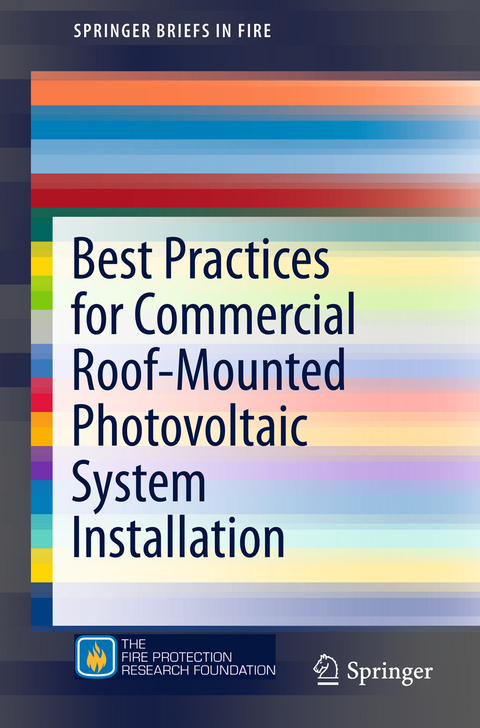
Best Practices for Commercial Roof-Mounted Photovoltaic System Installation
Seiten
2015
|
2015 ed.
Springer-Verlag New York Inc.
978-1-4939-2882-8 (ISBN)
Springer-Verlag New York Inc.
978-1-4939-2882-8 (ISBN)
This SpringerBrief presents information on a wide variety of hazards and the damage potential caused by installation of a photovoltaic (PV) system. Despite the increased popularity of PV systems after the environmental movement, research shows that the costs of installing PV systems outweigh the benefits.
This SpringerBrief presents information on a wide variety of hazards and the damage potential caused by installation of a photovoltaic (PV) system. The current installation practices for PV systems on roofs create electrical, fire, structural, and weather-related hazards that do not comply to current codes, standards and guidance documents. Potential dangers include structural loading, wind loads, hail, snow, debris accumulation, seismic hazards, firefighting hazards, and electrical hazards. Despite the increased popularity of PV systems after the environmental movement, research shows that the costs of installing PV systems outweigh the benefits. Hazards of PV systems on roofs have caused several incidents in the United States; the most notable in Bakersfield, California, and Mount Holly, North Carolina. Designed for fire engineers and professionals, Best Practices for Commercial Roof-Mounted Photovoltaic System Installation offers recommendations to set up PV systems safely and sustainably.
This SpringerBrief presents information on a wide variety of hazards and the damage potential caused by installation of a photovoltaic (PV) system. The current installation practices for PV systems on roofs create electrical, fire, structural, and weather-related hazards that do not comply to current codes, standards and guidance documents. Potential dangers include structural loading, wind loads, hail, snow, debris accumulation, seismic hazards, firefighting hazards, and electrical hazards. Despite the increased popularity of PV systems after the environmental movement, research shows that the costs of installing PV systems outweigh the benefits. Hazards of PV systems on roofs have caused several incidents in the United States; the most notable in Bakersfield, California, and Mount Holly, North Carolina. Designed for fire engineers and professionals, Best Practices for Commercial Roof-Mounted Photovoltaic System Installation offers recommendations to set up PV systems safely and sustainably.
Introduction.- Structural Loading.- Wind Loads.- Hail.- Snow.- Debris Accumulation.- Seismic.- Fire Hazards.- Electrical Hazards Associated with Fire Fighter Operations.- Weather-related Maintenance Considerations.- Compilation of Best Practices.- Hazard Gap Analysis.
| Reihe/Serie | SpringerBriefs in Fire |
|---|---|
| Zusatzinfo | 14 Illustrations, black and white; XIV, 76 p. 14 illus. |
| Verlagsort | New York |
| Sprache | englisch |
| Maße | 155 x 235 mm |
| Themenwelt | Naturwissenschaften ► Physik / Astronomie ► Mechanik |
| Technik ► Bauwesen | |
| Technik ► Maschinenbau | |
| Schlagworte | Fire codes • Fire hazards • Photovoltaic Systems • PV Systems • System installation |
| ISBN-10 | 1-4939-2882-1 / 1493928821 |
| ISBN-13 | 978-1-4939-2882-8 / 9781493928828 |
| Zustand | Neuware |
| Haben Sie eine Frage zum Produkt? |
Mehr entdecken
aus dem Bereich
aus dem Bereich
Statik - Kinematik - Kinetik - Schwingungen - Festigkeitslehre
Buch | Hardcover (2021)
Hanser, Carl (Verlag)
29,99 €


